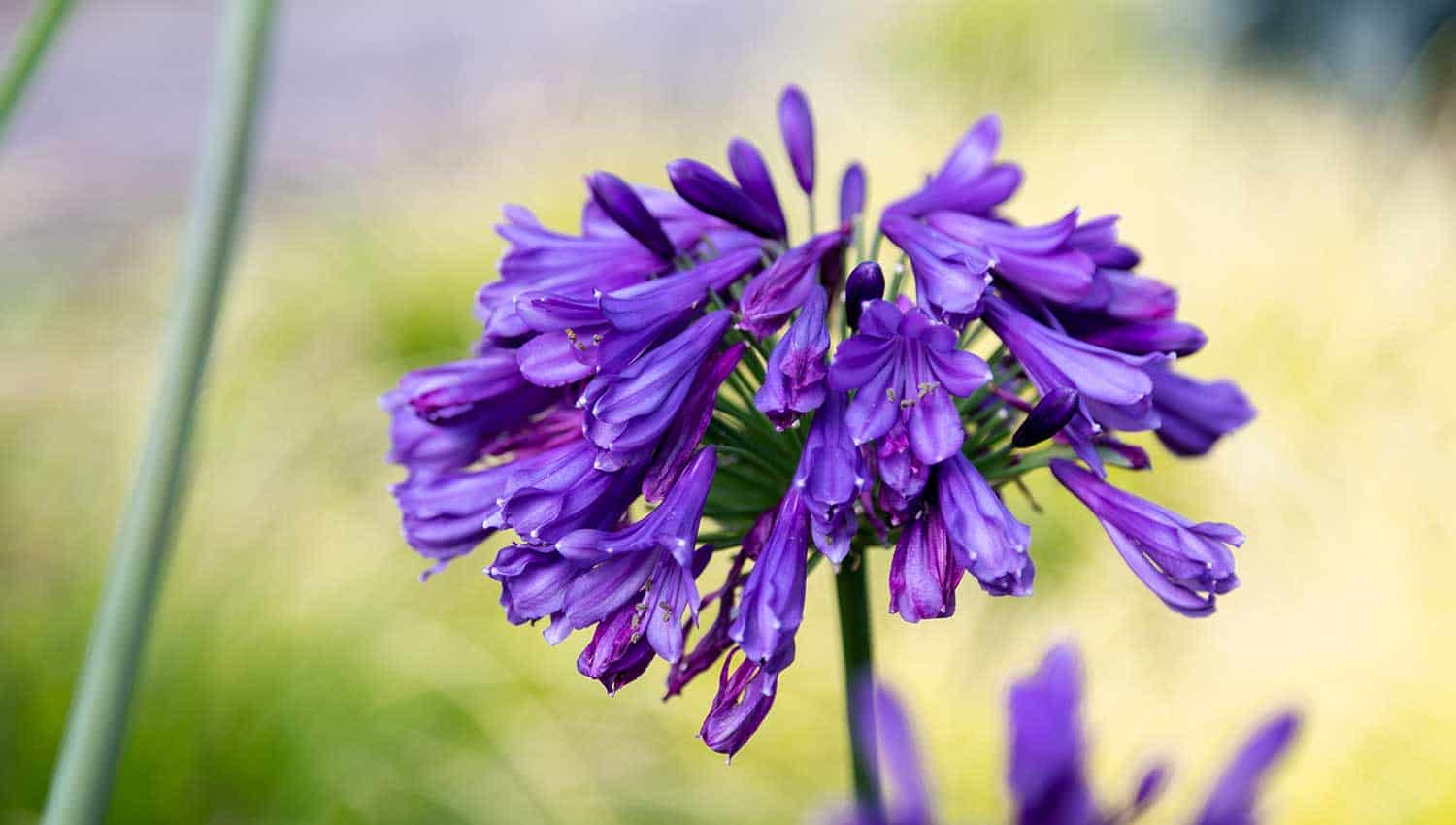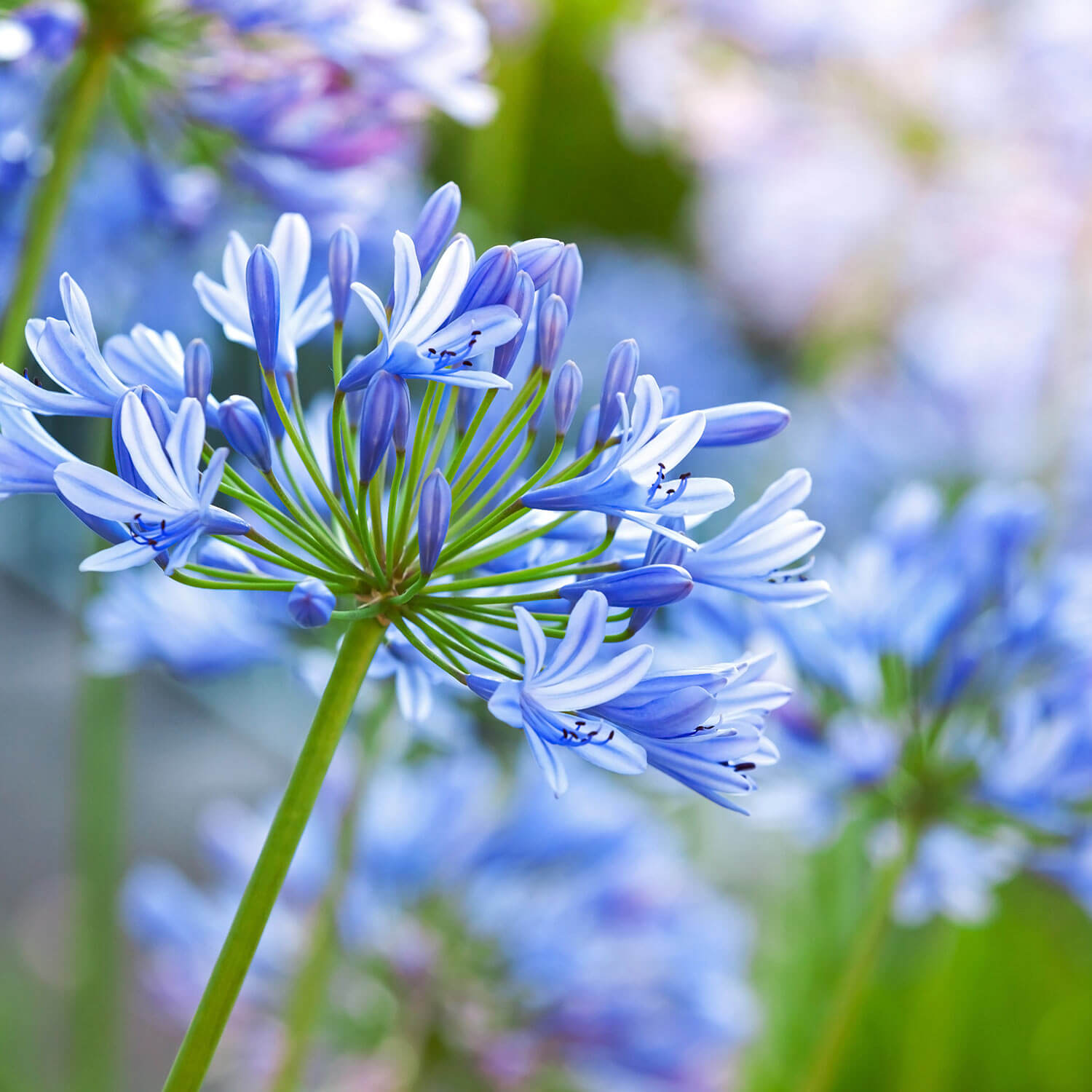Seasonal Agapanthus Care: Planning For Winter Season and Summer
Seasonal Agapanthus Care: Planning For Winter Season and Summer
Blog Article
Unleashing the Secret to Effective Agapanthus Growing: Tips and Techniques for a Flourishing Garden
In the realm of horticulture, cultivating agapanthus effectively calls for a strategic strategy that includes numerous facets of plant care. With cautious focus to information, one can unlock the secrets to nurturing these stunning flowers, causing a garden that thrives with elegance and vibrancy. By recognizing the nuances of agapanthus growing, one can develop an environment where these plants prosper and grow abundantly. In the complying with conversation, we will explore essential suggestions and techniques that will certainly lead you towards a thriving agapanthus yard, using insights right into finest techniques, soil conditions, watering methods, and a lot more.
Growing Agapanthus: Finest Practices
When planting Agapanthus, appropriate dirt preparation is crucial for making sure successful growth and development of these beautiful blossoms. Agapanthus, commonly called Lily of the Nile or African lily, prospers in well-draining soil with a slightly acidic to neutral pH degree - Agapanthus. Prior to growing, it is important to amend heavy clay dirts with organic matter such as garden compost or peat moss to enhance drain and give important nutrients for the plants
To grow Agapanthus, choose an area that receives full sunshine to partial shade, as this will advertise healthy development and bountiful flowering. Dig an opening two times the diameter of the plant's origin round and put the Agapanthus at the same depth it was formerly growing. Gently backfill the opening with soil, weighing down securely to eliminate any kind of air pockets around the origins.
Water the recently grown Agapanthus completely and continue to keep the soil uniformly wet, particularly during the plant's active growing period. Agapanthus. Using a balanced fertilizer once a month can further support the plant's development and blooming. By complying with these ideal practices for growing Agapanthus, you can develop a magnificent display screen of these fascinating flowers in your yard
Ideal Soil Conditions for Agapanthus
For optimal development and growing success of Agapanthus plants, making certain the dirt problems are optimal is essential. Agapanthus chooses soil that is rich in nutrients, so incorporating a well balanced fertilizer during the expanding season can promote healthy development and dynamic blossoms.

Watering and Fertilizing Tips
To make certain healthy and balanced growth and vibrant blooms, correct watering and feeding methods are important for successful Agapanthus cultivation. Agapanthus plants profit from normal watering, specifically during the growing period. It is recommended to water deeply once a week, ensuring the dirt is wet but not waterlogged. Throughout heat or in pots, more regular watering may be necessary to prevent the dirt from drying out totally.
When it comes to fertilizing Agapanthus, a balanced plant food with equivalent parts nitrogen, phosphorus, and potassium can be applied in the spring to advertise healthy development and flowering. Slow-release fertilizers are suitable for offering nutrients slowly over a prolonged duration. Avoid over-fertilizing, as this can result in too much vegetation development at the expenditure of flowers.
Additionally, including raw material like compost right into the dirt can boost nutrient levels and enhance soil framework, aiding in the total wellness of the Agapanthus plants. By following these watering and feeding tips, gardeners can ensure their Agapanthus plants prosper and visit this page generate sensational display screens of blossoms.
Pruning and Deadheading Strategies
Proper trimming and deadheading techniques play a critical duty in maintaining the wellness and aesthetic appeals of Agapanthus plants, matching the vital practices of watering and fertilizing for successful farming. Pruning Agapanthus involves removing spent flower heads, yellowing or dead leaves, and total shaping of the plant to advertise much better growth. Deadheading, the procedure of getting rid of discolored flowers, not only boosts the plant's look however additionally motivates further growing.
When deadheading Agapanthus, it is a good idea to snip off the flower stem at the base utilizing sharp, clean shears. This procedure reroutes the plant's power from seed manufacturing back into origin and vegetation growth, promoting a healthier and more durable plant. Regular deadheading can expand the flowering period of Agapanthus and stop self-seeding, which can bring about congestion.
In regards to trimming, Agapanthus typically gain from a light trim after blossoming to tidy up the plant and encourage fresh development. Cutting back the invested flower stems and getting rid of any kind of dead or damaged vegetation assists keep the plant's vitality and overall look. However, it is necessary to avoid cutting right into the crown of the plant, as this can compromise its health.

Protecting Agapanthus From Vermins and Diseases
Implementing reliable parasite and illness administration strategies is important to securing the wellness and vigor of Agapanthus plants in growing. Agapanthus are usually durable plants, but they can still succumb to numerous parasites and illness if not effectively cared for. One common parasite that influences Agapanthus is the Agapanthus borer, a caterpillar that tunnels into the plant, creating damages to the fallen leaves and blossoms. To stop invasions, regular assessment of the plants is important. If borers are detected, they can be by hand gotten rid of, or insecticidal soap can be used as a control procedure.
In addition to more tips here parasites, Agapanthus are susceptible to illness such as root rot and fungal leaf places. By staying watchful and dealing with insect and disease issues quickly, gardeners can assist their Agapanthus prosper and flourish.

Verdict
Finally, successful growing of agapanthus needs appropriate growing strategies, perfect dirt problems, ample watering and feeding, routine pruning and deadheading, and protection from conditions and parasites. By adhering to these methods and pointers, gardeners can guarantee a growing yard loaded with attractive agapanthus flowers. Agapanthus. Bear in mind to preserve constant care and attention to detail to promote the health and wellness and durability of these sensational plants
When growing Agapanthus, appropriate soil preparation is vital for making sure successful development and development of these gorgeous flowers.Water the newly planted Agapanthus thoroughly and continue to keep the dirt evenly wet, particularly throughout the plant's energetic Home Page growing period.For ideal growth and growing success of Agapanthus plants, making sure the dirt conditions are excellent is important. When planting or hair transplanting Agapanthus, make certain the soil is well-prepared to give the required foundation for the plants to develop themselves effectively. One common insect that influences Agapanthus is the Agapanthus borer, a caterpillar that passages into the plant, creating damage to the leaves and flowers.
Report this page